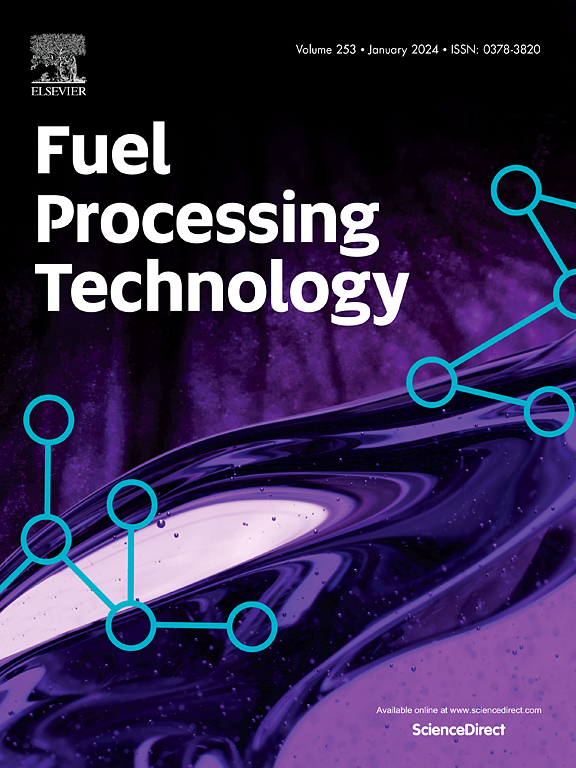Kinetic investigation of NH3 decomposition over Ru-based catalysts: The limiting role of H* surface coverage and its impact on reactor engineering
IF 7.7
2区 工程技术
Q1 CHEMISTRY, APPLIED
引用次数: 0
Abstract
H2 production via green NH3 decomposition is a key process in the value chain of renewable energy storage and distribution, but reactor engineering studies are at an early stage due to the still open research on catalyst formulation and reaction kinetics. In this work, the kinetics of NH3 decomposition are studied over Ru/MgAl2O4, Ru/γ-Al2O3 and Ru/MgO catalysts, that combine the best-known active metal, Ru, and supports suitable for industrial applications. For all the formulations, NH3 concentration and H2-cofeed are found to negatively affect the conversion, in line with the literature; however, original experiments at varying NH3 concentration with large H2-cofeed unambiguously show that, in the presence of H2-rich streams representative of the catalyst application, the intrinsic kinetics have a linear dependence on NH3 partial pressure and a negative order (−1.5) with respect to H2 partial pressure, consistent with the hypothesis that ammonia dehydrogenation is rate determining and H* is the most abundant surface intermediate. The same kinetic dependences were obtained over a commercial Ru-based catalyst. The kinetic relevance of hydrogen coverage and the intrinsic first order dependence on NH3 have two important implications: on a methodological plane, the performance and kinetics of the catalyst under industrially relevant conditions (e.g. pure ammonia) can be captured even under highly diluted NH3 feeds (which guarantee the rigorous isothermal conditions) provided that the large H2 contents are experienced; on a more applicative plane, both kinetic and thermodynamic factors play negatively at increasing concentration and pressure, thus large sizing (with GHSV values as low as 2500 Nl/kg/h) is needed to obtain complete ammonia conversion below 500 °C.
钌基催化剂上NH3分解动力学研究:H*表面覆盖的限制作用及其对反应器工程的影响
绿色NH3分解制氢是可再生能源储能和配送价值链中的关键环节,但由于催化剂配方和反应动力学等方面的研究仍处于起步阶段,反应器工程研究尚处于起步阶段。在这项工作中,研究了Ru/MgAl2O4, Ru/γ-Al2O3和Ru/MgO催化剂上NH3分解的动力学,这些催化剂结合了最著名的活性金属Ru和适合工业应用的载体。在所有配方中,NH3浓度和H2-cofeed均对转化率有负影响,与文献一致;然而,在不同NH3浓度和大H2共进料下的原始实验明确表明,在代表催化剂应用的富H2流存在时,本特征动力学与NH3分压呈线性关系,与H2分压呈负数量级(- 1.5),这与氨脱氢是速率决定的假设一致,H*是最丰富的表面中间体。在商业钌基催化剂上获得了相同的动力学依赖性。氢覆盖的动力学相关性和对NH3的内在一阶依赖性有两个重要的含义:在方法层面上,即使在高度稀释的NH3进料(保证严格的等温条件)下,只要经历了大量的H2含量,也可以捕获工业相关条件下(例如纯氨)催化剂的性能和动力学;在更适用的层面上,随着浓度和压力的增加,动力学和热力学因素都起负作用,因此在500℃以下获得完全的氨转化需要大的施浆(GHSV值低至2500 Nl/kg/h)。
本文章由计算机程序翻译,如有差异,请以英文原文为准。
求助全文
约1分钟内获得全文
求助全文
来源期刊

Fuel Processing Technology
工程技术-工程:化工
CiteScore
13.20
自引率
9.30%
发文量
398
审稿时长
26 days
期刊介绍:
Fuel Processing Technology (FPT) deals with the scientific and technological aspects of converting fossil and renewable resources to clean fuels, value-added chemicals, fuel-related advanced carbon materials and by-products. In addition to the traditional non-nuclear fossil fuels, biomass and wastes, papers on the integration of renewables such as solar and wind energy and energy storage into the fuel processing processes, as well as papers on the production and conversion of non-carbon-containing fuels such as hydrogen and ammonia, are also welcome. While chemical conversion is emphasized, papers on advanced physical conversion processes are also considered for publication in FPT. Papers on the fundamental aspects of fuel structure and properties will also be considered.
 求助内容:
求助内容: 应助结果提醒方式:
应助结果提醒方式:


